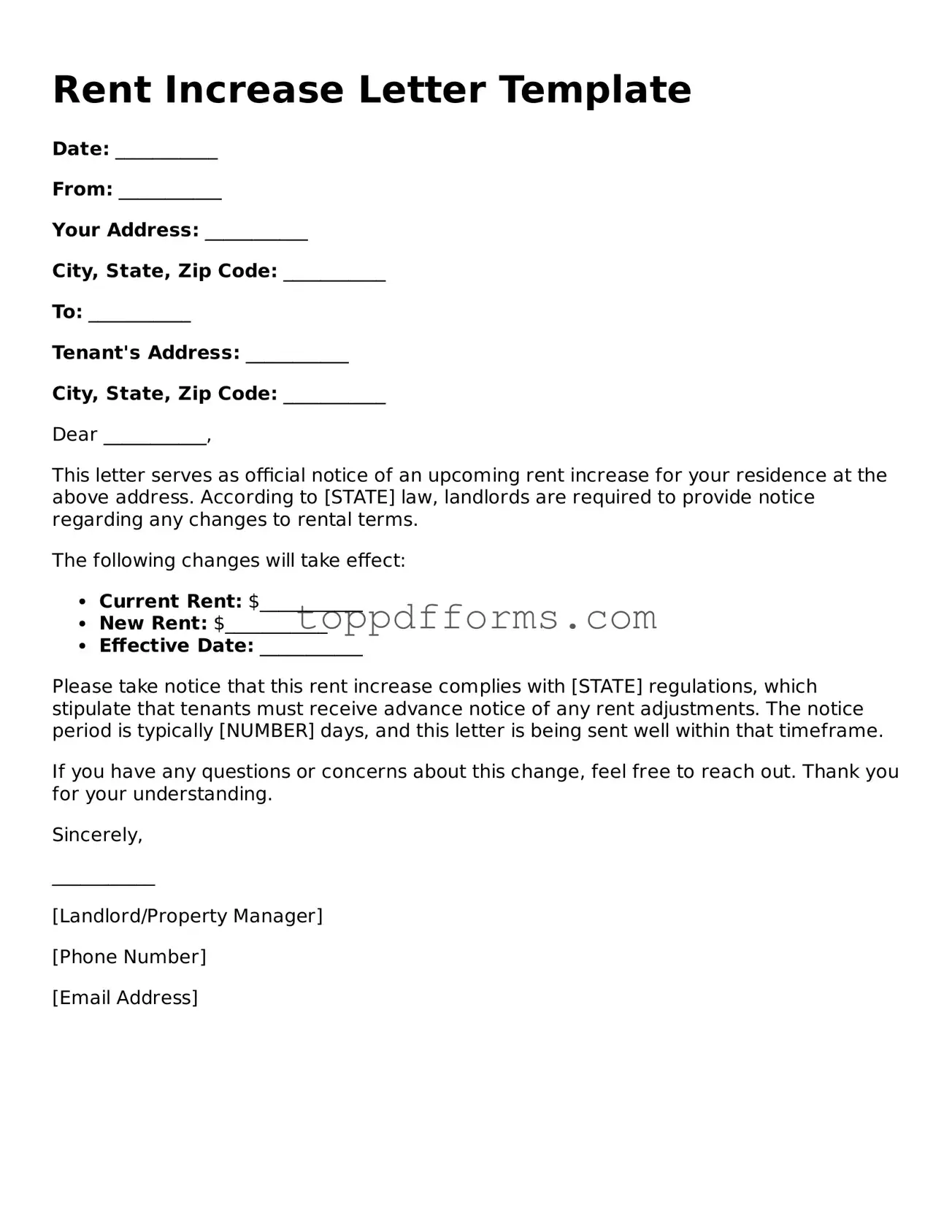What is a Rent Increase Letter?
A Rent Increase Letter is a formal document that a landlord uses to notify tenants about an upcoming increase in rent. This letter typically outlines the new rent amount, the effective date of the increase, and any relevant details regarding the change. It serves as a legal notice to inform tenants of their new financial obligations under the lease agreement.
When should a landlord send a Rent Increase Letter?
Landlords should send a Rent Increase Letter well in advance of the effective date of the increase. The specific time frame can vary by state or local laws, but it is commonly 30 to 60 days prior to the increase. This allows tenants sufficient time to adjust their budgets or make decisions about their housing situation.
What information should be included in a Rent Increase Letter?
A Rent Increase Letter should include several key pieces of information. First, it should clearly state the current rent amount and the new rent amount. Additionally, the letter should specify the effective date of the increase. It is also helpful to include the reason for the increase, if applicable, and any relevant contact information for the landlord or property management.
Are there any legal limits on how much rent can be increased?
Yes, many states and municipalities have laws that limit how much rent can be increased and how often increases can occur. These laws vary widely, so it is essential for landlords to familiarize themselves with local regulations. In some areas, rent control measures may apply, which can cap increases at a certain percentage.
Can tenants contest a rent increase?
Tenants may have the option to contest a rent increase, depending on local laws. If a tenant believes the increase is unjust or exceeds legal limits, they can often file a complaint with a local housing authority or take other legal action. It is advisable for tenants to review their lease agreements and consult local regulations to understand their rights.
What should tenants do if they do not receive a Rent Increase Letter?
If tenants do not receive a Rent Increase Letter and their rent is set to increase, they should first communicate with their landlord. A simple inquiry can clarify whether a notice was sent and ensure that the tenant is informed. If the landlord fails to provide proper notice as required by law, tenants may have grounds to contest the increase.
Is a Rent Increase Letter legally binding?
A Rent Increase Letter itself is not a legally binding contract but serves as a formal notice. The increase becomes binding if it complies with local laws and is acknowledged by the tenant. Tenants typically must either accept the new terms or provide notice of their intention to vacate if they do not agree to the increase.
What happens if a tenant does not pay the increased rent?
If a tenant does not pay the increased rent, the landlord may have the right to initiate eviction proceedings, depending on local laws and the terms of the lease. It is crucial for tenants to communicate with their landlords if they are unable to pay the new amount, as some landlords may be willing to negotiate or offer payment plans.
Can a landlord increase rent during a lease term?
Generally, a landlord cannot increase rent during a fixed lease term unless the lease agreement specifically allows for it. Most increases occur at the end of a lease term or during a month-to-month rental agreement. Landlords must adhere to the terms of the lease and local regulations regarding rent increases.
